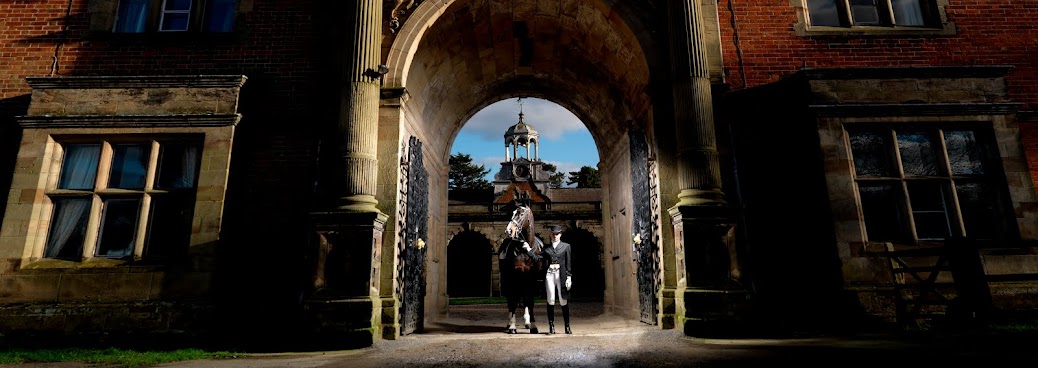Rider: Sally 5'9" 67kg
Horse: Rambo - 18yo Dutch Warmblood Gelding
I have been with Bliss for over 6 months now and I could not ignore the beauty and craftsmanship of the saddles any longer. It's like working in a sweety shop! The feedback we get from customers and fitters always emphasises how well the saddles fit the horses and the difference it makes in their way of going and improves their own position and balance too. I have also sat in enough to know they are blooming' comfortable. I thought it was high time I put my old off the shelf saddle to one side and upgrade to a Bliss.This gave me the opportunity to share the Bliss saddle fitting and making process with you, if perhaps you are considering taking the plunge.
The Fitting
Armed with an order form, flexi curve and expert SMS Qualified saddle fitter Nikki Newcombe, AKA, 'The Boss', we headed to the yard with a selection of saddles. I had previously looked through the range, which can be done online, and selected the ones that I thought would be most suitable for what I want to do. I have a comprehensive knowledge of the range but in a normal case this would be discussed before hand with one of our saddle fitters.
I like to do a little bit of everything with my horse Rambo. The saddle will be used for a range of disciplines including hacking, jumping, schooling, and the odd competition. I tend to prefer being airborne but also need a deeper seat for schooling.
We took with us the Loxley Foxhunter, the Loxley Jump LX, the Foxhunter Monoflap and the Jump Monoflap. We started off with the Loxley Jump LX, Nikki checked the fit of the saddle without a pad underneath. Checking how the saddle sat at the front; the clearance and width, then moved to check for any bridging and checking the overall balance. Once we were happy this saddle would be comfortable for Rambo we popped a thin pad underneath and girthed it so I could see how it felt for me. Pictures are generally taken along the way to refer back to if needed. Luckily Rambo isn't far off a Medium Wide.

I tried all of the different saddles (each being individually checked for fit) and retried them repeating a process of Nikki watching me perform circles in walk, trot and canter, viewing from in front and behind to evaluate balance and movement. As I am going to be using this saddle for jumping it was also important that I jumped a few fences to decide on which size blocks for support I needed and which seat I preferred. So after a long game of musical saddles I eventually decided on the Loxley Foxhunter Mono but with a slightly more open seat.
The monoflap option gave me a lovely close contact feel and the Foxhunter is enough depth of seat to school in but with enough freedom to jump larger fences unhindered. We then had to accommodate my gangly legs with a 1" further forward flap. We decided at the 9 o'clock angle as when jumping I ride with short stirrups. The beauty of custom made saddles is that they have the flexibility to be built accordingly that off the shelf saddles don't. I also preferred the Jump blocks, which are smaller instead of the larger Foxhunter blocks.
Then we went back to Rambo's fit. While trying the saddles we noticed a bit of lift in the back of the saddle in canter and then looking at his confirmation decided that the Warmblood tree with flatter angle at the back would be more suitable for him. A higher wither meant that the saddles with an extra deep back gusset had a better seat balance point. As Rambo is going a little grey around the edges we also popped in an extended panel to fill in the slight hollows behind the wither. All of these finer points make the custom made saddle fit perfectly.

We then used the flex-curve to make a template of his shape over where the tree points will sit (and not his whither as I thought!) this will be used to make an exact measurement of T-18 (the last rib) and his horizontal profile from the whither down the spine. These will be recorded for future comparisons. Photos are taken of these measurements which fitters will send in with orders to discuss with Nikki the options regarding panel and trees profiles.
Now the difficult decision on the styling of the saddle, with options of leather, colours, welting, stitching and cantle designs, the possibilities seem endless. The form is likely to sit on my desk for a few days or so whilst I make my decision. I will then update you more as it goes into production - exciting!







